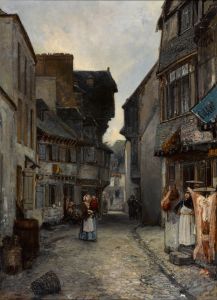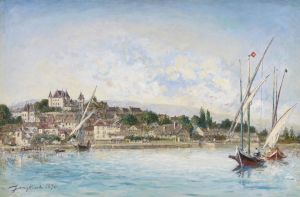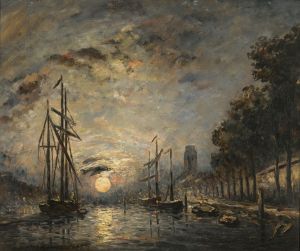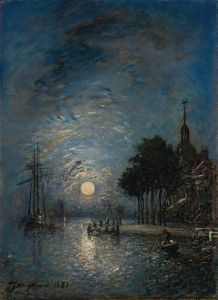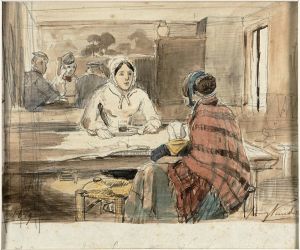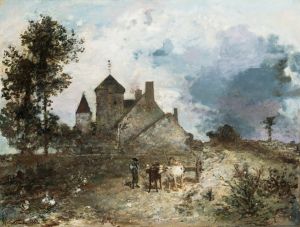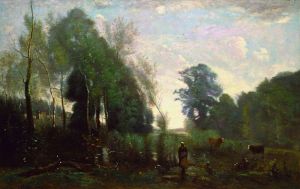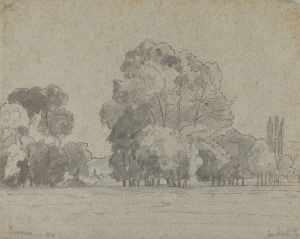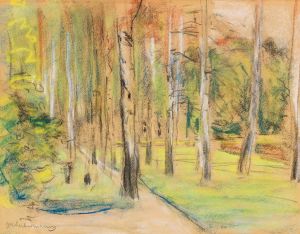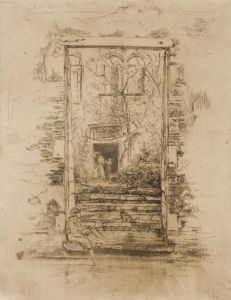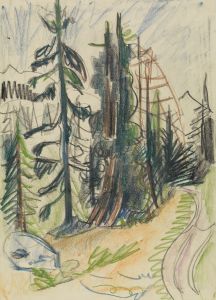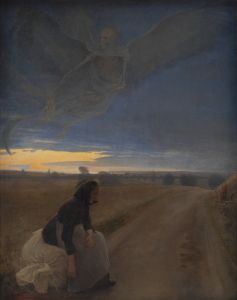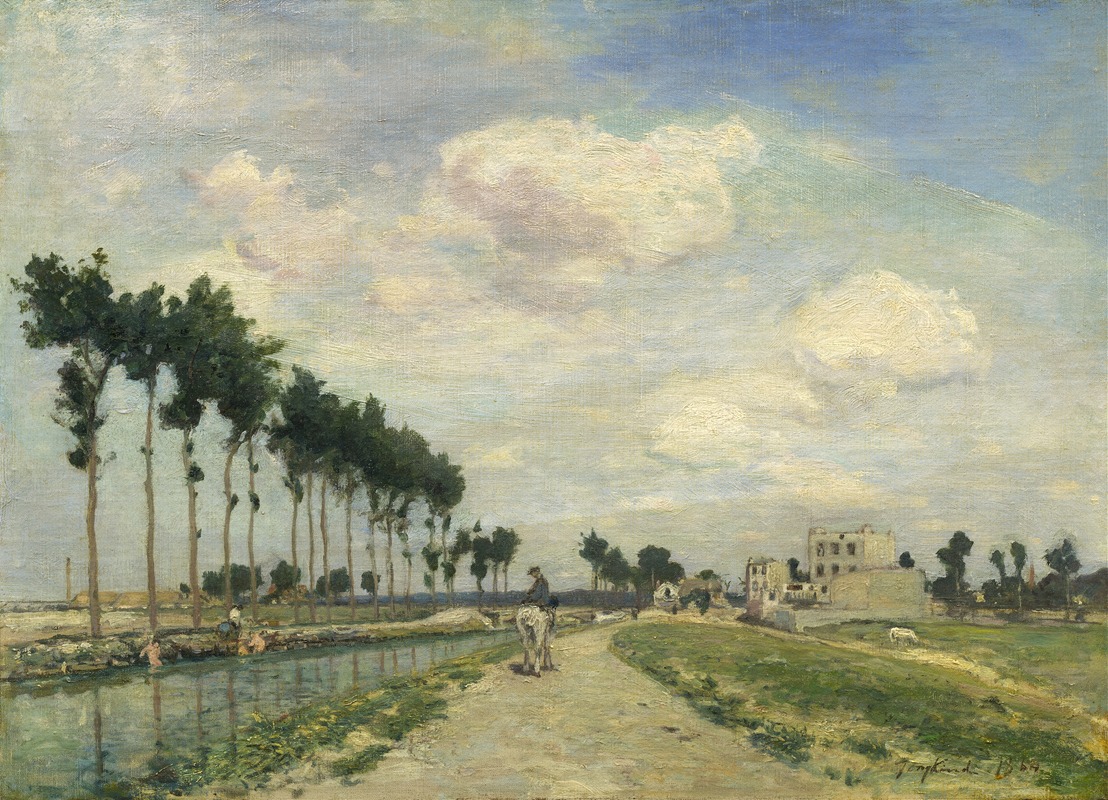
The Towpath
A hand-painted replica of Johan Barthold Jongkind’s masterpiece The Towpath, meticulously crafted by professional artists to capture the true essence of the original. Each piece is created with museum-quality canvas and rare mineral pigments, carefully painted by experienced artists with delicate brushstrokes and rich, layered colors to perfectly recreate the texture of the original artwork. Unlike machine-printed reproductions, this hand-painted version brings the painting to life, infused with the artist’s emotions and skill in every stroke. Whether for personal collection or home decoration, it instantly elevates the artistic atmosphere of any space.
Johan Barthold Jongkind was a Dutch painter known for his significant contributions to the development of Impressionism. Born on June 3, 1819, in the Netherlands, Jongkind spent much of his career in France, where he became associated with the Barbizon School and later influenced the Impressionist movement. His works are celebrated for their innovative use of light and color, capturing the transient effects of atmosphere and weather.
"The Towpath" is one of Jongkind's notable works, although specific details about this particular painting are not extensively documented. Jongkind's oeuvre often features landscapes, river scenes, and coastal views, reflecting his fascination with water and its reflective qualities. His paintings typically depict scenes from France and the Netherlands, characterized by a keen observation of nature and a loose, expressive brushwork that prefigures Impressionism.
Jongkind's technique involved painting en plein air, or outdoors, which allowed him to capture the immediacy of natural light and its changing effects on the landscape. This approach was relatively novel at the time and laid the groundwork for the Impressionists, who would further develop this method. Jongkind's influence is particularly noted in the works of Claude Monet, who regarded him as a mentor and a source of inspiration.
In "The Towpath," Jongkind likely employed his characteristic style, focusing on the interplay of light and shadow, and the serene yet dynamic qualities of a waterway scene. Towpaths, which are paths alongside rivers or canals used by horses towing boats, were common subjects in Jongkind's work, as they offered a glimpse into the everyday life and the interaction between humans and nature.
Jongkind's palette often included soft, muted tones, with a delicate balance of blues, greens, and earth colors, creating a harmonious and tranquil atmosphere. His brushwork was fluid and spontaneous, capturing the essence of the scene rather than its precise details. This approach allowed viewers to experience the mood and ambiance of the landscape, engaging with the painting on an emotional level.
Throughout his career, Jongkind exhibited his works in various salons and galleries, gaining recognition for his unique style and contribution to the art world. Despite facing financial difficulties and personal struggles, he remained dedicated to his craft, leaving behind a legacy that would influence future generations of artists.
Jongkind passed away on February 9, 1891, in France, but his work continues to be celebrated for its pioneering approach to landscape painting and its role in the transition from traditional to modern art. "The Towpath," like many of his paintings, exemplifies his ability to capture the fleeting beauty of nature, making it a significant piece in the history of art.





